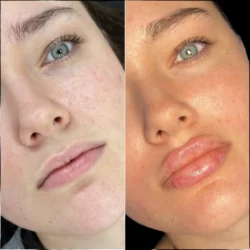If your child has been diagnosed with an undescended testicle, you may feel worried, confused, or unsure about what happens next. Cryptorchidism is more common than many parents realise, but the good news is that treatment is effective—especially when done early. Understanding the essentials of undescended testicle treatment helps parents make confident decisions and safeguard their child’s long-term health.
Below is a comprehensive guide covering the latest evidence, risks, timing, and what every parent should prioritise.
What Is an Undescended Testicle? A Quick Medical Overview
An undescended testicle (cryptorchidism) occurs when one or both testicles fail to move into the scrotum before birth or shortly after. This may happen in the abdomen, groin, or anywhere along the usual pathway of descent.
Most testicles descend naturally before birth, but when they do not, careful monitoring is required to determine whether treatment is necessary.
What Causes an Undescended Testicle?
The exact cause is not always known, but several factors can increase the likelihood of cryptorchidism:
- Premature birth
- Low birth weight
- Hormonal imbalances during pregnancy
- Family history of undescended testicles
- Foetal developmental issues
Even with these risk factors, many boys born with the condition grow completely healthy after timely treatment.
Signs & Symptoms Parents Should Look Out For
Most babies with an undescended testicle have no pain, which is why parents often discover it during routine check-ups.
The main signs include:
- An empty scrotum on one or both sides
- A testicle that appears to “come and go” (retractile)
- Groin swelling
- Visible asymmetry between the two sides of the scrotum
- Any discomfort or swelling that could relate to other testicular pain causes.
If you notice these signs, a paediatric urologist should evaluate your child.
10 Important Facts About Undescended Testicle Treatment
1. Cryptorchidism Happens When the Testicle Fails to Reach the Scrotum
It can occur before birth or shortly after. The testicle may be in the groin, abdomen, or along the inguinal canal.
2. Some Testicles Descend Naturally — But Only Up to 6 Months
Natural descent may happen during the first 3–6 months of life.
If it has not descended by six months, undescended testicle treatment is usually required because natural descent after this period is unlikely.
3. Orchiopexy Is the Standard and Most Effective Treatment
Orchiopexy is a highly successful surgery where the testicle is gently moved into the scrotum and secured in place.
It is safe, minimally invasive, and performed routinely in paediatric urology.
4. Hormone Therapy Is No Longer Recommended
Hormonal injections were once used to encourage descent. However, due to low success rates and inconsistent outcomes, they are no longer considered a reliable treatment option.
5. Best Timing: Treatment Between 6–12 Months
Experts recommend completing surgery before 18 months, ideally between 6–12 months.
The earlier the undescended testicle treatment, the better the long-term fertility and hormonal outcomes.
6. Early Treatment Reduces Infertility & Cancer Risks
Untreated undescended testicles carry higher risks of:
- Infertility
- Testicular cancer later in life
- Torsion
- Trauma
- Impaired sperm development
Correcting the condition early reduces these risks significantly.
7. The Surgery Involves a Small, Safe Incision
The procedure usually involves:
- A small incision in the groin or scrotum
- Gently relocating the testicle
- Securing it inside a scrotal pouch to prevent retraction
Most children return home the same day.
8. Aftercare Is Simple: Avoid Straddle Toys & Rough Activities
For about two weeks after surgery, parents should avoid:
- Bicycles and straddle toys
- High-impact sports
- Rough play around the groin area
This allows the testicle to settle and heal safely.
9. Delayed Treatment Can Lead to Complications
If the condition is not corrected, complications may include:
- Infertility
- Increased cancer risk
- Testicular torsion
- Hormonal imbalance
- Greater vulnerability to trauma
- Long-term discomfort that may be mistaken for other testicular pain causes
10. Treatment Is Effective Even if Diagnosed Later
Although early treatment is ideal, surgery is still recommended for boys diagnosed in childhood or adolescence.
Correction at any age helps reduce cancer risks and protect testicular function.
How Doctors Diagnose an Undescended Testicle
Diagnosis usually includes:
- Physical examination by a specialist
- Review of birth history and health records
- Ultrasound only when needed (not always required)
- Assessment for associated conditions like hernias
In most cases, an experienced paediatric urologist can diagnose the condition without imaging.
Why Early Treatment Matters for Your Child’s Future
Performing undescended testicle treatment during infancy provides several important benefits:
- Better sperm production and fertility later in life
- Lower risk of testicular cancer
- Improved hormonal development
- Proper scrotal temperature regulation
- Reduced risk of torsion or trauma.
- Improved confidence and body image during adolescence
These advantages highlight why early evaluation is essential.
Conditions Linked to Undescended Testicles
Some boys with cryptorchidism may also have:
- Inguinal hernia
- Retractile testicle
- Testicular torsion
- Hypospadias
- Hormonal issues
- Testicular atrophy
A specialist will evaluate for these during consultation.
Why Parents in Dubai Trust Dr Mahesh K Dhanjee
Dr Mahesh K Dhanjee is a respected urologist in Dubai known for his compassionate approach, advanced surgical expertise, and deep understanding of paediatric urology conditions.
He stays at the forefront of modern surgical techniques, minimally invasive procedures, and evidence-based treatment pathways.
Parents appreciate his ability to make both children and families feel safe, heard, and supported—especially when dealing with sensitive issues like cryptorchidism.
Through urologistdubai.ae, families gain access to reliable information and expert-led care for paediatric urology, kidney disease, prostate problems, erectile dysfunction, renal stones, and more.
Medical Disclaimer
This article is for educational purposes only and should not replace personalised medical advice. Always consult a qualified paediatric urologist for diagnosis and treatment.
FAQ: Undescended Testicle Treatment
1. What age should my child receive treatment?
Ideally between 6–12 months. Treatment is still recommended if the condition is diagnosed later.
2. Can the testicle come down on its own?
Only within the first 3–6 months. After that, natural descent is unlikely.
3. Does an undescended testicle cause pain?
Not usually, but related issues like torsion, hernia, or trauma are common testicular pain causes requiring urgent care.
4. Is orchiopexy a safe procedure for infants?
Yes. It is a standard paediatric surgery with excellent success rates and very low complication risks.
5. What happens if we delay treatment?
Delaying increases the risk of infertility, cancer, and long-term testicular dysfunction.
Understanding the essentials of undescended testicle treatment empowers parents to take timely and informed action. Early diagnosis and correction protect fertility, reduce future health risks, and support healthy development.
For expert guidance in Dubai, families trust Dr Mahesh K Dhanjee, a leading urologist known for his advanced surgical expertise and compassionate care. To learn more or book a consultation, visit urologistdubai.ae—your trusted source for professional, evidence-based urology care.



